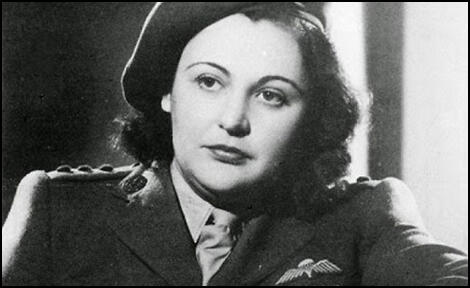On this day on 7th August
On this day in 1867 artist Emil Nolde was born as Emil Hansen, near the village of Nolde, Germany, on 7th August, 1867. His parents, devout Protestants, were peasants. "Of Danish-German lineage, he was part of an ethnic minority that opted for life in the German Reich even under foreign citizenship. He became a carver and draftsman and in 1892 began creating watercolours of mountain motifis in Switzerland."
In 1892 he became a drawing instructor at the Museum of Industrial and Applied Arts. His main objective was to become a full-time artist but it was not until 1905 that he had his first art exhibition. The following year he briefly joined with Ernst Ludwig Kirchner, Max Pechstein, Fritz Bleyl, Karl Schmidt-Rottluff and Erich Heckel to form Die Brücke, the first group of German Expressionist painters. Kirchner and his friends were all in their early to mid-20s, determined, they said, "to wrest freedom for our actions and our lives from the older, comfortably established forces."
Nolde's held anti-Semitic views and this was expressed in the Pentecost (1909). However, the painting was rejected for an exhibition by the Berlin Secession, an artist group founded in 1898 in opposition to European salons and as a defender of traditional German culture. "Nolde was deeply attached to the work depicting the visitation of the Holy Spirit upon Jesus Christ’s apostles after their savior’s death and resurrection". After its rejection Nolde wrote a scathing letter to Berlin Secession president Max Liebermann. The letter was leaked to the press and Nolde never forgave Liebermann, a Jewish German, and accused him of subverting true German culture. "Throughout his life Nolde suffered from negative art-criticism and in this anti-Semitic conspiracy theory he found something it could be convincingly attributed to.”
An example of Nolde's expressionism can be seen in The Party (1911). "It is a gathering of cold-eyed strangers with yellow faces. Sex hums through the bright light but so does menace." (4) Nolde's wife, Ada Vilstrup worked as a dancer. "Its louche characters and hubbub inspired vivid graphics, stage-lit in watercolour." Nolde was at the forefront of "a generation of German artists who eschewed saccharine Impressionism for a new, emotionally charged vocabulary. His debt to both his forebears and contemporaries is evident: the harrowing realism of Grünewald rubs shoulders with the heartfelt, early depictions of peasants by Nolde’s great hero Van Gogh; haunted, Ensor-like masks jostle with something like the gaiety of Toulouse-Lautrec."
The following year he painted The Candle Dancers (1912). According to Jonathan Jones: "It is the German answer to Matisse’s Dance. It is a lot more chaotic and frenzied, a confession of lust and intoxication. Two women wearing nothing but translucent skirts are throwing their limbs about wildly as they jump between lighted candles. Nolde juxtaposes their purple-pink flesh with a red and gold background like the fires of hell.... Yet this erotic reverie is fraught, uneasy. Nolde, who grew up in farm country and regularly returned there to paint, finds pre-first world war Berlin a corrupt, scary place."
Nolde held anti-Semite views and in a letter sent to a friend in 1911 drew a distinction between “Jews” and “Germans” and claimed that the leaders of the Berlin Secession art movement, such as Max Liebermann, Lovis Corinth and Max Pechstein, were Jews. He added that “the art dealers are all Jews”, as were the “leading art critics” and that “the entire press was at their disposal”. He went on to make the allegation that the Secession movement was spreading like “dry rot” throughout the country.
Nolde became known for his harsh, almost grotesque depictions of biblical scenes. In 1921 Emil Nolde painted Paradise Lost. It was highly controversial but it had its supporters. Calvin Seerveld has argued: "The oil painting catches in vivid, sensuous colour the aftermath of the fall into sin by the disobedient action of Eve and Adam. The yellow, orange-haired Eve stares out at us unseeing, listless and disconsolate. Bearded Adam is grim, faced with the long haul of hard labour ahead of him on a cursed brown earth. The serpent curled around a tree, beady-eyed with fang hanging out, separates the disgruntled pair. A saber-toothed lion presses forward out of the background (left), while a couple of red flowers and trees (right) hint at the garden of Eden left behind. Nolde depicts the rough loneliness and tiresome petulence that are the wages of sin for us elemental, agitated humans, world with an end."
Jonathan Jones claims that Nolde's anti-Semitism can be seen in his paintings: "Looking at the alien, weirdly coloured faces that populate Nolde’s nightmare world, I start to see features that are troubling not aesthetically but historically. Does one of the men in his 1908 painting Market People have a hooked nose straight out of antisemitic caricature? And are the theatre-going couple in 1911’s In the Box being similarly reduced to antisemitic stereotypes? I wonder if I am overreacting, as the gallery labels appear blithely unaware. Then finally in front of Nolde’s 1921 triptych Martrydom there is no room for doubt. As Christ suffers on the cross, two monstrously caricatured Jewish witnesses gloat in the foreground. This is a modernist version of a very ancient hate."
Emil Nolde was strongly opposed to the Russian Revolution and saw it as part of a Jewish conspiracy. In 1931 he wrote that “the whole Soviet system was of Jewish origin and served Jewish interests”, which were to use “the power of money” to gain “world domination”. (10) He supported Adolf Hitler and the Nazi Party and on 9th November, 1933, attended a dinner commemorating the 10th anniversary of the Beer Hall Putsch, the failed coup in which Nazis attempted to seize power from the Bavarian government. “The Führer is great and noble in his aspirations and a genius man of action” Nolde wrote in a letter to a friend the following day. He also raised concerns that Hitler “is still being surrounded by a swarm of dark figures in an artificially created cultural fog.” The “dark figures” to which he referred were Jewish Germans who, the artist believed, sought to destroy what he considered “pure” German art through cultural diversity.
Barry Schwabsky has tried to explain Nolde's Anti-Semitism: "Nolde’s psychology will sound familiar to anyone who has ever spent much time around artists. There’s a certain significant minority among them whose arrogant certainty that they have never been properly recognized - and somehow no amount of recognition may ever be quite enough - tends to devolve into fantasies of persecution, the feeling that some cabal or mafia is arrayed against them. For Nolde, this was the Jews. In another time and place, this obsession might have remained a private affair, known only to a few intimates, but Nolde had the moral bad luck to be a contemporary of the Nazis, of whom he became an early and avid supporter."
Nolde was determined to enter Hitler’s good graces. A year after meeting him at the dinner party, he wrote an autobiography modeled on Hitler’s Mein Kampf entitled Jahre der Kämpfe (or Years of Struggle, using the plural of “Kampf”). In the book he advocated eugenics: “Some people, particularly the ones who are mixed, have the urgent wish that everything - humans, art, culture - could be integrated, in which case human society across the globe would consist of mutts, bastards and mulattos.”
Nolde welcomed the action that Hitler took against the Jews. He not only denounced his fellow artist Max Pechstein as a “Jew” (he wasn’t), but in the summer of 1933 drafted a plan for how to remove Jews from German society. At the time several leading Nazis, including Joseph Goebbels and Albert Speer had paintings by Nolde on their walls. Goebbels, the head of the Culture Ministry, served as a honorary patron of an exhibition on Italian Futurism in Berlin in March, 1934. In a speech made in June 1934, Goebbels argued "We National Socialists are not un-modern; we are the carrier of a new modernity, not only in politics and in social matters, but also in art and intellectual matters."
Goebbels was in a minority and Paul Schultze-Naumburg, a senior figure in the Nazi Party, wrote a pamphlet entitled, The Struggle for Art: (1932) attacking the knd of modern art being produced by people like Nolde. "Woman has probably never been depicted so disrespectfully and in so unappetizing a way as in the paintings we have been obliged to put up with in German exhibits of the last twelve years, paintings that inspire only nausea and distrust. They convey not the slightest trace of the sacredness of the human body or of the glory of a divine nakedness. They express a ravening lasciviousness that sees the nude only as an undressed human being in its lowest form... The essential element of art, as we understand it, is therefore to always show a ‘spiritual direction’. And the idea of National Socialism is based on appropriately 'giving direction' to the German people and leading it to salvation. And since that task is substantially conducted with spiritual tools, national socialism cannot ignore the instrument of art."
Alois Schardt, a member of the Nazi Party and one of the directors at the Berlin National Art Gallery, was a defender of the work of Emile Node. He saw the Expressionist struggle as a spiritual renewal and as a return to the Germanic heritage. In his lecture, What is German Art? Schardt presented his theoretical justification for his position. He argued there was a direct link between the nonobjective ornamentation of the German bronze age and Expressionist painting. "The decline of German art began in 1431 when naturalism began to impringe on expressive art. Everything created after the first century in Germany was of only historical and documentary value and was essentially un-German."
Nolde did not paint in "the hyper-realistic style that Hitler preferred, favoring instead bold brushstrokes and electrifying colors to evoke visceral feelings of primal passion." (18) Hitler hated Emil Nolde's work commenting: "Whatever he paints are nevertheless always piles of manure.” (19). In the same year as he took power, the Führer repeatedly described Nolde as a “pig” and swore that he would not spend a penny of the new regime’s money on giving him commissions. Hitler also announced that gallery directors would be instructed not to buy any more of his works on pain of imprisonment.
When Hitler gained power he appointed Adolf Ziegler, a strong supporter of Schultze-Naumburg, as his artistic adviser. In November, 1933, Schardt was dismissed from office. In January 1934 Hitler had appointed Alfred Rosenberg as the cultural and educational leader of the Reich. Ziegler got support from Rosenberg in his disagreement with Goebbels. Rosenberg saw his mission to preserve the "folkish ideology in its purest form" and rejected Goebbels's belief that artists such as Heckel, Nolde and Barlach were representative of contemporary Germany's "indigenous Nordic" art.
Hitler was asked to intervene in the dispute. He made his position clear in a speech in September, 1934. Hitler argued that there were "two dangers" that National Socialism had to overcome. First, the iconoclastic "saboteurs of art," were threatening the development of art in Nazi Germany. "These charlatans are mistaken if they think that the creators of the new Reich are stupid enough or insecure enough to be confused, let alone intimidated, by their twaddle. They will see that the commissioning of what may be the greatest cultural and artistic projects of all time will pass them by as if they had never existed."
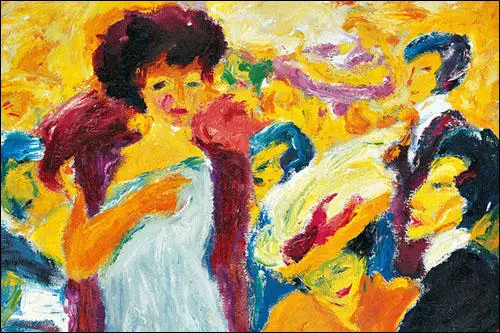
On this day 1876 Margaretha Geertruida Zelle (Mata Hari) was born in Leeuwarden, Netherlands. Soon after Margaretha's father went bankrupt in 1889, her parents divorced, and her mother died in 1891. She studied to be a kindergarten teacher in Leiden.
In 1903, Zelle moved to Paris, where she performed as a circus horse rider using the name Lady MacLeod. The following year she adopted the name Mata Hari and became an exotic dancer.
In July 1917, a new government under Georges Clemenceau had come into power, utterly committed to winning the war. In this context, having one German spy on whom everything that went wrong with the war so far could be blamed was most convenient for the French government, making Mata Hari the perfect scapegoat, which explains why the case against her received maximum publicity in the French press, and led to her importance in the war being greatly exaggerated.
Mata Hari) was executed by a firing squad of 12 French soldiers just before dawn on 15 October 1917. She was 41. [39] According to an eyewitness account by British reporter Henry Wales, she was not bound and refused a blindfold. She defiantly blew a kiss to the firing squad.
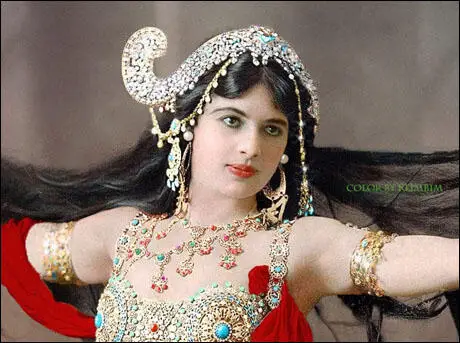
On this day in 1890 Elizabeth Gurley Flynn, the daughter of Irish immigrants, was born in Concord, New Hampshire. The family moved to South Bronx in 1900 and Flynn was educated at the local public school. She later recalled: "I hated poverty. I was determined to do something about the bad conditions under which our family and all around us suffered." Converted by her parents to socialism, she was only 16 when she gave her first speech, What Socialism Will Do for Women , at the Socialist Club in Harlem. As a result of her political activities, Flynn was expelled from high school.
In 1905 representatives of 43 groups who opposed the policies of American Federation of Labour, formed the radical labour organisation, theIndustrial Workers of the World (IWW). At first its main leaders were William Haywood, Vincent Saint John, Daniel De Leon and Eugene V. Debs. Other important figures in the movement included Mary 'Mother' Jones, Lucy Parsons, Hubert Harrison, Carlo Tresca, Joseph Ettor, Arturo Giovannitti, James Cannon, William Z. Foster, Eugene Dennis, Joe Haaglund Hill, Tom Mooney, Floyd B. Olson, James Larkin, James Connolly, Roger Nash Baldwin, Frank Little and Ralph Chaplin. Flynn became a full-time organizer for the IWW in 1907.
In January 1912 the American Woolen Company in Lawrence, Massachusetts, reduced the wages of its workers. This caused a walk-out and the Industrial Workers of the World (IWW), who had been busy recruiting workers into the union, took control of the dispute that became known as the Lawrence Textile Strike. The IWW formed a strike committee with two representatives from each of the nationalities in the industry. It was decided to demand a 15 per cent increase in wages, double-time for overtime work and a 55 hour week.
The mayor of Lawrence called in the local militia and attempts were made to stop the workers from picketing. Thirty-six of the workers were arrested and most of them sentenced to a year in prison. Money was collected throughout America to help the strikers. One of the IWW's leading figures, Arturo Giovannitti, arrived in Lawrence to help organize relief. A network of soup kitchens and food distribution stations were set up and striking families received from $2 to $5 cash a week. Soon afterwards Elizabeth Gurley Flynn, Bill Haywood, and Carlo Tresca of the IWW arrived in Lawrence and took over the running of the strike.
Dynamite was found in Lawrence and newspapers accused strikers of being responsible. However, John Breen, a local undertaker, was charged and arrested with planting the explosives in an attempt to discredit the IWW. It was later discovered that William Wood, the president of the American Woolen Company, had paid Breen $500. Another man, Ernest Pitman, who claimed that he had been present in the company offices in Boston when the plan was developed, committed suicide before he could give evidence in court. Wood was unable to explain why he had given Breen the money but charges against him were dropped.
The Lawrence Textile Strike became so violent that as William Cahn has pointed out in his book Lawrence 1912: The Bread and Roses Strike (1977): "To safeguard the health of small children during the strike, parents would send them to relatives and friends in other cities. Small tots were bundled up, with identification tags hung around their necks, and sent off to spend a few weeks in New York or Bridgeport or Barre or Philadelphia. Usually a reception demonstration would be given the children upon their arrival in a community.
The governor of Massachusetts ordered out the state militia and during one demonstration, a fifteen-year old boy was killed by a militiaman's bayonet. Soon afterwards a woman striker, Anna LoPizzo was shot dead. The union claimed that she had been killed by a police officer, but Joseph Caruso, a striker, was charged with her murder. Joseph Ettor and Arturo Giovannitti, who were three miles away speaking at a strike meeting, were arrested and charged as "accessories to the murder".
Faced with growing bad publicity, on 12th March, 1912, the American Woolen Company acceded to all the strikers' demands. By the end of the month, the rest of the other textile companies in Lawrence also agreed to pay the higher wages. However, Joseph Ettor and Arturo Giovannitti, remained in prison without trial. Protest meetings took place in cities throughout America and the case eventually took place in Salem. On 26th November, 1912, both men were acquitted. It was a great success for the Elizabeth Gurley Flynn and the IWW.
On 27th January, 1913, 800 employees of the Doherty Silk Mill at Paterson, New Jersey, went on strike when four members of the workers' committee were fired for trying to organize a meeting with the company's management to discuss the four-loom system. Within a week, all silk workers were on strike and the 300 mills in the town were forced to close.
Flynn, Bill Haywood, and Carlo Tresca of the Industrial Workers of the World arrived in Paterson and took over the running of the strike. Flynn held successful weekly meetings for women only. During the dispute over 3,000 pickets were arrested, most of them received a 10 day sentence in local jails. Two workers were killed by private detectives hired by the mill workers. These men were arrested but were never brought to trial.
John Reed, the well-known socialist journalist, arrived in the town to report the strike. He was soon arrested and imprisoned in Paterson County Jail. When the police found that he was embarrassing them by writing articles on prison conditions, they released him. Other left-wing journalists such as Walter Lippman and Mabel Dodge arrived to show solidarity with Reed and to support the demand that reporters should be free to report industrial disputes.
John Reed, Mabel Dodge and John Sloan organised a Paterson Strike Pageant in Madison Square Garden in an attempt to raise funds for the strikers. Dodge later wrote: "For a few electric moments there was a terrible unity between all of these people. They were one: the workers who had come to show their comrades what was happening across the river and the workers who had come to see it. I have never felt such a pulsing vibration in any gathering before or since."
However, as Bertram D. Wolfe pointed out: "It is hard work to fill Madison Square Garden. The dollar and two-dollar seats remained almost empty until workers and strikers were let in free or at ten cents a seat. Instead of making money, the pageant ended with a deficit." The strike fund was unable to raise enough money and in July, 1913, the workers in Paterson were starved into submission.
Elizabeth Gurley Flynn defended the way the Industrial Workers of the World run the campaign: "What is a labour victory? I maintain that it is a twofold thing. Workers must gain economic advantage, but they must also gain revolutionary spirit, in order to achieve a complete victory. For workers to gain a few cents more a day, a few minutes less a day, and go back to work with the same psychology, the same attitude toward society is to achieve a temporary gain and not a lasting victory. For workers to go back with a class-conscious spirit, with an organized and determined attitude toward society means that even if they have made no economic gain they have the possibility of gaining in the future."
After the Lawrence Textile Strike and the Paterson Textile Strike Flynn helped to organise campaigns among garment workers in Pennsylvania, silk weavers in New Jersey, restaurant workers in New York City, and miners in Minnesota. During this period the writer, Theodore Dreiser, described her as "an East Side Joan of Arc." Flynn was arrested ten times during this period but was never convicted of any criminal activity.
Eugene Lyons met Flynn during this period. In his autobiography, Assignment in Utopia (1937), he described Flynn as "the most brilliant woman I had ever met. A veteran of the front trenches in the labor struggle since fifteen, she was, at thirty, attractive, winsomely Irish in her wit and her savor of life, with a remarkably cool intelligence behind her fiery oratory and personality. In the Mesaba Range strike, the Paterson and Lawrence strikes, her eloquence and courage and sweetness had won her tens of thousands of worshipful friends among the workers."
A founding member of the American Civil Liberties Union, Flynn was active in the campaign against the conviction of Sacco-Vanzetti. Flynn was particularly concerned with women's rights. She supported birth control and women's suffrage. Flynn also criticised the leadership of trade unions for being male dominated and not reflecting the needs of women.
Elizabeth Gurley Flynn's biographer, Rosalyn Fraad Baxandall, has pointed out: "After a brief marriage she left her husband and returned to her family, and remained with them most of her life. Her mother and her sister Kathie, a schoolteacher, raised her son, Fred (1911-1940), who died tragically as the result of an operation." Flynn had a love affair with Carlo Tresca and when the relationship came to an end in 1928 she had a breakdown and ceased to be active in politics for the next eight years.
In 1936 Flynn joined the Communist Party of the United States and wrote a feminist column for his journal, the Daily Worker. Two years later she was elected to the national committee. She was mainly a figurehead and rarely dissented from the party line and did not question the Great Purge of those Bolsheviks who were accused of being followers of Leon Trotsky. As Paul Buhle has pointed out: "The public portrayals of Russia as a virtual paradise for workers and peasants required great credulity, even in the best of times, and the later 1930s were far from the best of times. Stalin's purges of the Old Bolsheviks through the Moscow Trials required ideological overkill from American Communists, which baffled and pained their liberal allies."
Flynn also supported the foreign policy of the Soviet Union. It was argued that this was the best way to defeat fascism. However, this view took a terrible blow when on 28th August, 1939, Joseph Stalin signed a military alliance with Adolf Hitler, and other leaders of the party decided to support the Nazi-Soviet Pact. As John Gates pointed out that this created serious problems for the party. "We turned on everyone who refused to go along with our new policy and who still considered Hitler the main foe. People whom we had revered only the day before, like Mrs. Roosevelt, we now reviled. This was one of the characteristics of Communists which people always found most difficult to swallow - that we could call them heroes one day and villains the next."
When the United States joined the Second World War and became allies with the Soviet Union, attitudes towards communism changed. Flynn played an important role in the campaign for equal economic opportunity and pay for women and the establishment of day care centres for mothers working in industry. In 1942 Flynn ran for Congress in New York and received 50,000 votes.
On the morning of 20th July, 1948, Eugene Dennis, the general secretary of the American Communist Party, and eleven other party leaders, including William Z. Foster, Benjamin Davis, John Gates, Robert G. Thompson, Gus Hall, Benjamin Davis, Henry M. Winston, and Gil Green were arrested and charged under the Alien Registration Act. This law, passed by Congress in 1940, made it illegal for anyone in the United States "to advocate, abet, or teach the desirability of overthrowing the government". Flynn launched a campaign for their release, but in June 1951 was arrested in the second wave of arrests and charged with violating the Alien Registration Act.
After a nine-month trial she was found guilty and was sentenced to a three-year term. Miriam Moskowitz, also a member of the Communist Party of the United States, was at the Women's House of Detention when Flynn and Marion Bachrach were brought in. "They were lodged on my floor but in a different corridor so I did not see them until the afternoon recreation hour. I found them sitting on the roof and I introduced myself. Marian gasped. 'You're still here!' She took my hand and greeted me warmly. Gurley Flynn sat frozen, barely returning my greeting, and I was vaguely uncomfortable that she was signaling me that it was not a good idea for us to be seen hobnobbing together (spy and Communist fraternizing?). I disregarded her signals; for me it would have been a waste of a golden moment for companionship, no matter how ephemeral."
In her autobiography, Phantom Spies, Phantom Justice (2010), she recalled: "Marian and I talked animatedly; I described the absurd customs and conventions characteristic of life in jail which she would need to be sensitive to, and I also told her I was awaiting a decision on my appeal. It was so good to talk naturally and freely with someone who shared my universe!... When we returned to the floor Marian wished me well and embraced me. Gurley Flynn barely nodded good-bye."
Elizabeth Gurley Flynn served her sentence in the Alderson Federal Penitentiary in West Virginia (January 1955 through to May 1957). She later wrote an account of her prison experiences in The Alderson Story: My Life as a Political Prisoner (1955).
Elizabeth Gurley Flynn became national chairman of the Communist Party of the United States in 1961. She made several visits to the Soviet Union and died while there in September, 1964. She was given a state funeral in Red Square. In accordance with her wishes, Flynn's remains were flown to the U.S. for burial in Chicago's Waldheim Cemetery, near the graves of Eugene Dennis, Bill Haywood and the Haymarket Martyrs.
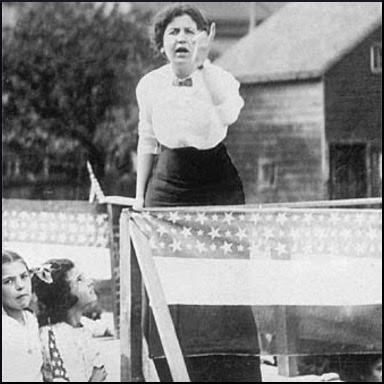
On this day in 1901 Sigmund Freud admits in a letter that Wilhelm Fliess has influenced his ideas. "You remember my telling you years ago, when you were still a nose specialist and surgeon, that the solution lay in sexuality. Several years later you corrected me, saying that it lay in bisexuality - and I see that you are right. So perhaps I must borrow even more from you; perhaps my sense of honesty will force me to ask you to co-author the work with me; thereby the anatomical-biological part would gain in scope, the part which, if I did it alone, would be meager. I would concentrate on the psychic aspect of bisexuality and the explanation of the neurotic. That, then, is the next project for the immediate future, which I hope will quite properly unite us again in scientific matters as well."
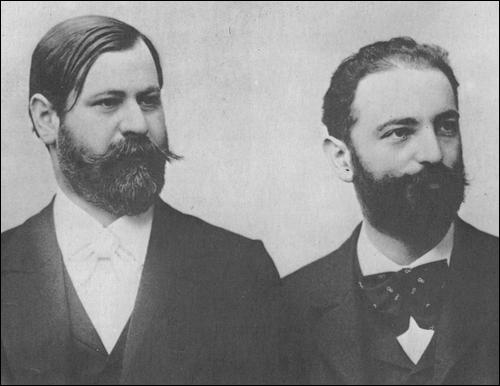
On this day in 1912 Mary Leigh endures another hunger-strike. On 7th August Mary Leigh weighed ninety-five pounds, and Gladys Evans a hundred and fourteen pounds. Before they were force-fed for the first time, their weight had fallen to ninety and ninety-six pounds respectively. After a week Mary's weight had dropped to eighty-six pounds and Gladys had lost only half a pound. Despite having been fed three times a day, Mary had lost ten pounds in eighteen days and the authorities feared that she would die.
Leigh was released on licence on 20th September 1912 weighing five stones and four pounds.: "When the medical report was received by the Prison Board regarding the grave condition of Mrs Leigh's health, a consultation took place, the Attorney-General being called in. After a long consultation the Board, with the approval of the Attorney-General, recommended her release, and the Lords Junction of the Privy Council, in the absence of the Lord Lieutenant, made the necessary order. The release took place at 6.30 pm. It was the intention to have her removed to the Mater Hospital, but she was conveyed in a cab by two lady friends to a private residence. She is in a state of almost complete collapse, and a specialist will be called in today. Miss Gladys Evans, her fellow-prisoner, who is also being forcibly fed, was examined likewise, but as her condition has not become so far debilitated, no order was made in respect of her. In Mrs. Leigh's case, she had acquired the power of vomiting the food as soon as administered, and her debilitation was due to the consequent starvation."
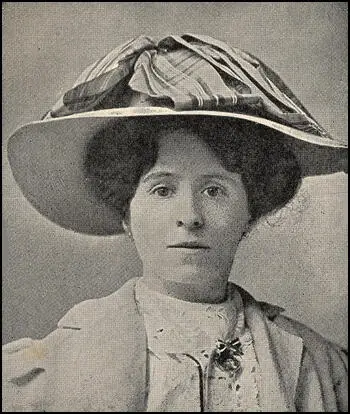
On this day in 1912 Gladys Evans is sent to prison for five years for arson. On 16th July, 1912, Evans and Jennie Baines caught a boat from Holyhead to Dublin and took lodgings in Lower Mount Street. Mary Leigh and Mabel Capper arrived two days later. They were in the city because Herbert Asquith was to give a speech on Home Rule to 4,000 supporters. On the 18th July, Leigh saw Asquith travelling in an open carriage with John Redmond and the Lord Mayor of Dublin. She hurled a hatchet at Asquith, but missed him and hit Redmond on his ear.
According to John O'Brien, the Chief Marshall: "When abreast of Prince's Street he saw an article flung from the opposite side. He ran round by the horses' head and saw the accused (Mary Leigh) holding on to one of the rails of the carriage. He saw the accused throw the article. He pulled her away from the carriage, when she counteracted him, and started to poke him and tear at him, and struck him a couple of blows in the face."
Leigh was able to escape and that night, along with Gladys Evans attended a production of the Theatre Royal. As the audience was leaving Joseph Keoth noticed a woman (Evans) throwing a burning rag soaked in paraffin into the projection box at the back of the stalls and running away as if she "expected some explosion". Evans then chucked a handbag filled with gunpowder and matches into a box near the stage. Leigh also threw a burning chair into the orchestra pit. "Several small explosions occurred, produced by amateur bombs made of tin canisters, which, with bottles of petrol and benzine, were afterwards found lying about."
Evans was arrested at the scene and Leigh at her lodgings the next morning. Jennie Baines and Mabel Capper were also taken into custody. The four women were charged with having "unlawfully conspired with other persons, known, and unknown, to inflict grievous bodily harm and wilful and malicious damage upon property, and to cause an explosion in the Theatre Royal of a nature likely to endanger life or to cause serious injury to property; and that in pursuance of this object they attempted to set fire to the theatre."
Tim Healy represented Evans at her trial. Votes for Women reported: "In his fine and impassioned speech for the defence of Miss Gladys Evans, he (Tim Healey) was rankly contemptuous of the trifling quantity of the damage to a couple of curtains, a carpet, and two chairs, only in comparison with the vaster outrages committed by the forerunners of the present-day electors, but with a greater and still more powerful emphasis, in comparison with the daily and hourly destruction of women's and children's lives in the cities of our civilisation."
Mary Leigh told them that if they sent her to prison she might not survive the sentence. Mary warned that if convicted she would fight: "she would put her back against the wall, and nothing, not even the whole army of the Government and officials, would bring her to submission. The jury returned guilty verdicts on Mary Leigh and Gladys Evans. Both women were sent to prison for five years because "no more terrible catastrophe could occur in a city than a conflagration at a theatre". Jennie Baines was sentenced to seven months with hard labour, and Mabel Capper was acquitted for lack of evidence."
The health of Gladys Evans began to give the authorities concern. Her heartbeat became irregular and she showed signs of "great nervous tension and general breakdown." She also began to resist the feeding process. It was reported she "violently resisted all efforts that were made to feed her and struggled very much". Five wardresses were needed to overcome her, and she had to be strapped by the ankles and wrists into the feeding chair. Evans was released on licence on 3rd October on medical grounds, after fifty-eight days of hunger-striking and being fed by stomach tube eighty-eight times.
Votes for Women reported: " To the great joy of the comrades of the Women's Social and Political Union, Miss Gladys Evans has won her way to freedom through the terrible suffering of the hunger strike. In a state of almost complete collapse, she was removed on medical advice, on Thursday last week to a private house… On the Monday before her release she barricaded her cell door, which was burst open. On Tuesday she managed to block the bathroom door, and when it was broken open took refuge in the filled bath fully clad. This she did to cause delay, and put off the moment of torture. On Wednesday she fought and struggled so that they were unable to feed her at all, and on Thursday her condition was such that the authorities decided they must release her."
Newspapers complained that it was wrong that Gladys Evans had escaped her five years in prison sentence. A few weeks later she was arrested again. However, the magistrate refused to revoke her license and she was released: "The words of the magistrate are remarkable. It was difficult, he said, to carry out strictly the law in the case of people who were absolutely reckless of the consequences, for whom punishment had no terror, and penal servitude no shame. He could not entertain the idea of sending the prisoner back to penal servitude by revoking her license. The prisoner has brought more suffering on herself than the most merciless law could impose, and he thought the six days she had been on remand were sufficient punishment for no non-compliance with the law, possibly through a mistake. He therefore discharged her."
Gladys Evans recuperated in Berne, Switzerland. However, along with Mary Leigh she was in the WSPU office at Lincoln's Inn House, when it was raided on 30th April 1913. According to one source 45 plain clothes policemen from scotland yard arrived in a fleet of taxis. At the some moment, a large contingent of uninformed officers, who had been hiding in a side street, emerged and the combined force stormed the building. Several people were arrested including Edwy Godwin Clayton, Flora Drummond, Annie Kenney, Rachel Barrett (editor of the The Suffragette), Harriet Kerr (office manager), Beatrice Sanders (financial secretary), Geraldine Lennox (sub-editor) and Agnes Lake (business manager). However, Gladys Evans and Mary Leigh were released without charge.
During the First World War she drove a lorry in France and worked as a chauffeur to a relief mission in Blerancourt Chateau, in Aisne near the Belgian Border. According to her niece, Joan Skinner: "Anne Morgan paid for her to come to New York and take a Frances Fox Beautician's course. Worked in Long Island at a nursing home. In her sixties she developed what would now be called Alzheimers. She could not come back to the Skinners in Montreal because she was in the US illegally and my father got her a railway pass to Los Angeles where Ethel and eventually the Little Sisters of the Poor looked after her."
Gladys Evans died in Los Angeles in 1967.
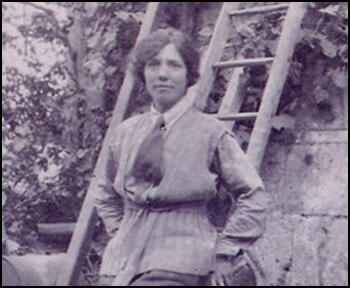
On this day in 1914 Mary Richardson writes about the force-feeding of Grace Roe. "I was in the next cell to Grace Roe since her conviction and had frequent conversations with her. I consider her the most injured by forcible feeding of any in Holloway… Grace suffers extremely from pain in her nose, throat and stomach all day and night, says she feels as if the tube were always in her body. She says that mentally this is telling on her, and she sometimes feels something would crack in her brain. She anticipates an utter collapse on her release. She is very thin, so thin she can be in no position without positive pain in her bones; she is frightfully anaemic and says her gums are chalk white, and indeed her whole face is."
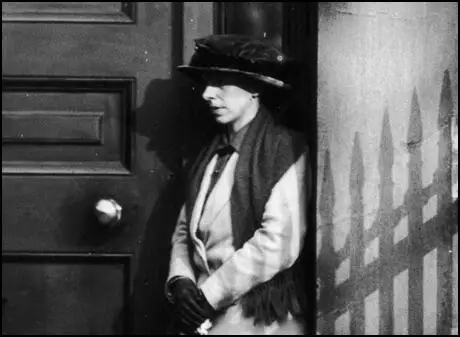
On this day in 1914 The Daily Chronicle writes about newspapers and patriotic duty.
A newspaper's duty is to give news, but at times of war it has a patriotic duty as well. It must give no news which would convey information of advantage to the adversary.
Throughout this war, The Daily Chronicle will refrain from indicating the location and movements of warships and units of the army. At the same time The Daily Chronicle has taken complete and energetic measures to supply its readers with full intelligence from every part of the war areas.
The censorship that we exercise over our news will not affect its value to the ordinary reader of the paper. The special correspondents of The Daily Chronicle are men of world-wide repute, experienced in war, vivid descriptive writers and brilliant news-getters.
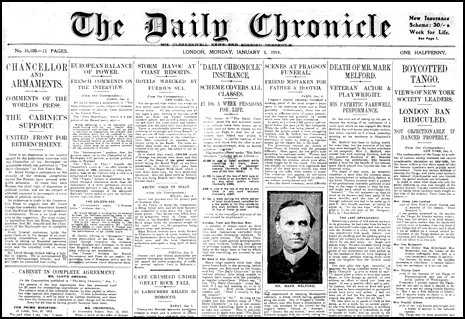
On this day in 2011 war-hero Nancy Wake died. Nancy Wake was born in Wellington, New Zealand, on 30th August, 1912. The family moved to Australia in 1914 and after being educated in Sydney she travelled to Europe where she worked as a journalist. In Nazi Germany she saw the rise of Adolf Hitler and Anti-Semitism. On one occasion in Vienna she witnessed Jews being whipped by members of the Sturm Abteilung (SA).
In 1939 Nancy married the wealthy French industrialist, Henri Fiocca, in Marseilles. Nancy was in France when the German Army invaded in May 1940. After the French government surrendered, Nancy joined the French Resistance. She worked with Ian Garrow's group helping British airmen shot down over France to escape back to Britain.
In December 1940 the network was betrayed and Nancy was forced to go into hiding. She continued to work for the French Resistance and was eventually arrested while in Toulouse. However, the authorities did not realize they had captured the woman known as the "White Mouse" and she was released after four days.
It was now too dangerous to remain in occupied France and Nancy crossed the Pyrenees into Spain before travelling to Britain. David Stafford has pointed out: "Henri promised to follow. But he was picked up by the Gestapo and shot. She blamed herself for his death: if it had not been for her, she mourned, he would have survived the war."
Nacy Wake now joined the Special Operations Executive (SOE) and agreed to become a British special agent. Her training reports said "a very good and fast shot" and she "put the men to shame by her cheerful spirit and strength of character". Vera Atkins, who worked in the SOE's French section, remembered her as: "A real Australian bombshell. Tremendous vitality, flashing eyes. Everything she did, she did well".
On 29th April 1944, Nancy was parachuted into the Auvergne region of France. Her main objective was to locate local bands of the Maquis and to provide them with the ammunition and arms that were being dropped by parachute by the Royal Air Force four times a week.
Nancy had the task of helping the resistance to prepare for the armed uprising that was due to coincide with the D-Day landings. She also led a raid against the Gestapo headquarters in Mountucon and a German gun factory. Henri Tardivat, one of her comrades in the resistance later said that: "She is the most feminine woman I know, until the fighting starts. Then she is like five men."
After the war, Nancy worked for the Intelligence Department at the British Air Ministry. As her biographer has pointed out: "She never quite adjusted to peace. A desk-bound job in the British embassy in Paris quickly drove her wild with boredom, and she returned to Australia, where she stood unsuccessfully as a Liberal candidate in 1949 and 1951. Still restless, she moved to London and married John Forward, an RAF bomber pilot. He liked a drink, enjoyed a joke, and they were well matched. They relocated to Australia and had a gregarious life marked by dining, golfing, occasional trips to Europe and interviews with journalists about wartime exploits."
After the death of her second husband in 1997 she returned to London and lived in the Star and Garter Home for ex-servicemen and women in Richmond. To fund her later years she sold her war medals. She commented: "There was no point in keeping them. When I die, I'll probably go to hell and they'd melt anyway. My only condition is when I die, I want my ashes scattered over the hills where I fought alongside all those men."
